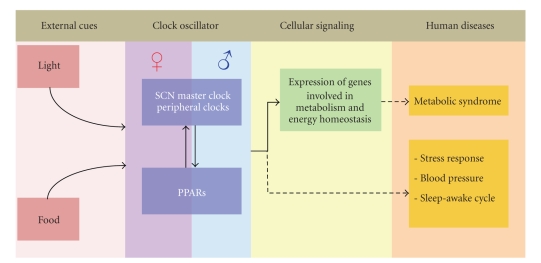Figure 2.
Overview of the functional link between the biological clocks and PPARs in health and disease. The external cues such as food and light can program SCN and peripheral clocks, leading to corresponding orchestrated expression of genes involved in metabolism and energy homeostasis. The gene products of clock components and PPARs reciprocally regulate each other, while both exhibit gender difference. Aberration in the biological clock-PPARs network is causative of metabolic syndrome and may also be responsible for human disorders including stress response, blood pressure, and sleep-awake cycle.

